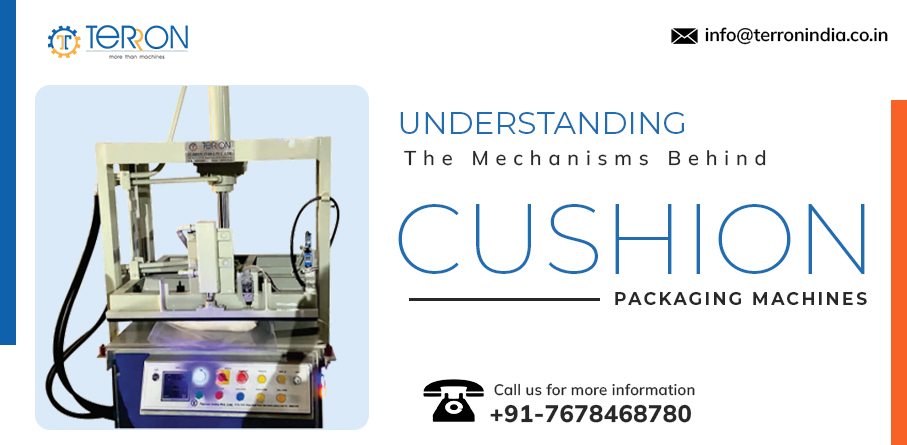An extensive list of advantages exists to using a vacuum packing machine or fluffy product compression machine. You might hear it called a fiber compression machine, vacuum packing machine, or cushion packaging machine.
By reducing oxygen levels, a pillow-packing machine inhibits the growth of microorganisms. Additional volatile ingredients can be better protected from product damage using a cushion packing machine. It is much easier to store and ship pillows to customers using a pillow compression packaging machine or a fluffy items packing machine.
Various cushion compression machines and vacuum pillow packaging machines are available from Terron India. To make flattening puffy pillows a breeze, these vacuum pack machines are tailor-made for the job. You may easily discover the fiber packaging machine that best suits your production needs from our wide variety, which includes models with varying capacities.

Mechanical Components of a Pillow Machine
Our pillow packing machines rely on their mechanical parts to physically construct the machine and carry out critical production operations. Now, let's have a look at the main mechanical parts:
Frame and Structure
The machine as a whole is supported and stabilized by the frame. It is usually constructed from strong materials such as steel or aluminum to endure the rigors of daily use. The building can support additional parts and is sturdy enough to hold them in place.
Feed System
The fabric is fed through the machine by the feed system. The fabric is moved uniformly and smoothly on rollers or belts, which allow for exact positioning during cutting and sewing.
Cutting Mechanism
Properly slicing the cloth into pillow-shaped pieces is the job of the cutting mechanism. Depending on its design and capabilities, the machine can be sewn using various techniques like rotary blades or laser cutting. Our vacuum packing machine price is affordable for all.
Sewing Mechanism
The pillow's exterior is created by stitching the fabric together using the sewing mechanism. To improve productivity and quality, more sophisticated pillow machines may have numerous sewing heads that use specific stitch patterns.
Filling System
Polyester fibers, feathers, or foam are among the materials that the filling method uses to fill the cushions. Hopper systems, blowers, and conveyor systems are common components that guarantee a uniform and regulated distribution of the filling material.
Electrical Components of a Pillow Machine
Electrical components supply electricity and direct the machine's activities, whereas mechanical components offer the machine's structure and functionality. The essential electrical parts are as follows:
Motors and Drives
Electric motors power the feeding system, cutting mechanism, and sewing machinery in pillow machines. These motors supply the power and control required for accurate movement and operation. To control the speed of the motor and guarantee precise positioning, drives like servo drives are utilized.
Controls and Sensors
Importantly, our pillow machine sensors can sense the fabric's presence, location, and tension. To maintain constant and dependable production, the control system can make real-time adjustments thanks to the feedback provided by these sensors. The machine's general operation and the interaction between its various components are supervised by controllers, such as programmable logic controllers (PLCs).
Cooling and Heating Systems
Our pillow machines can be customized to treat different fabrics by incorporating heating and cooling systems. To aid in shaping and stabilizing the fabric when cutting, sewing, or filling, these systems may incorporate heaters, temperature sensors, and fans.
Control and Automation Systems
Our pillow machines use state-of-the-art control and automation technologies that maximize output while decreasing operator effort. We are the top vacuum packing machine Supplier.



0 Comments